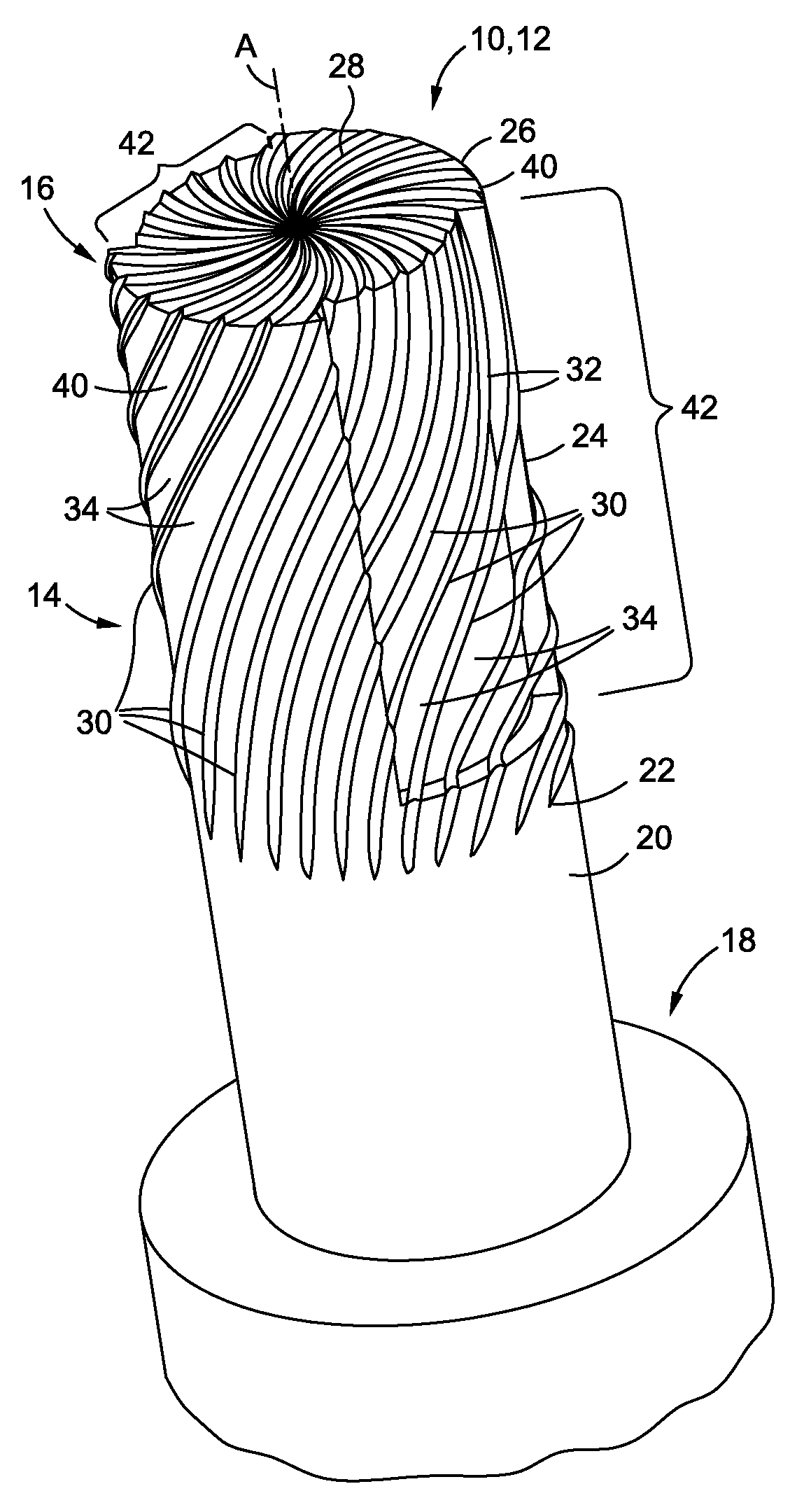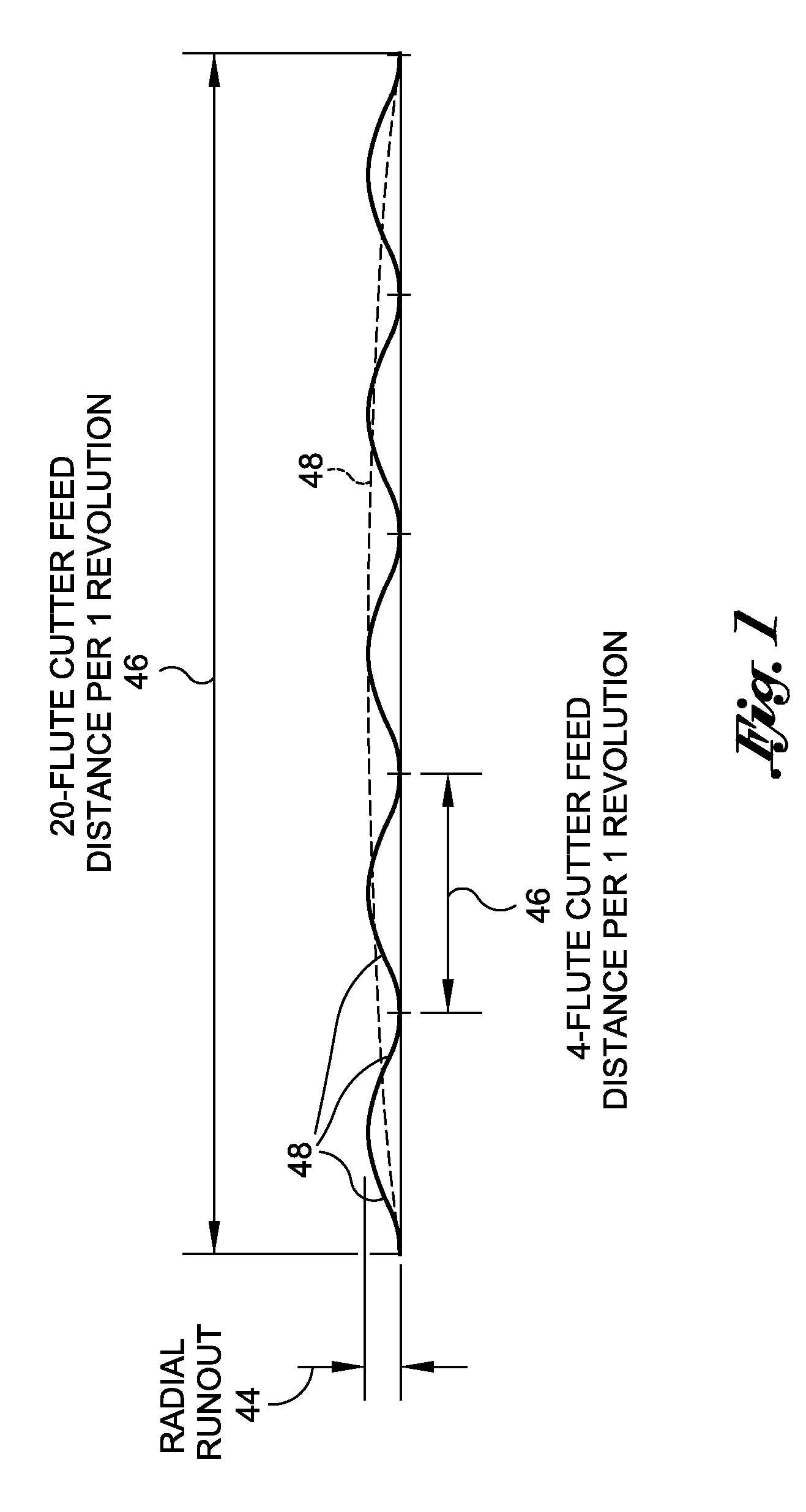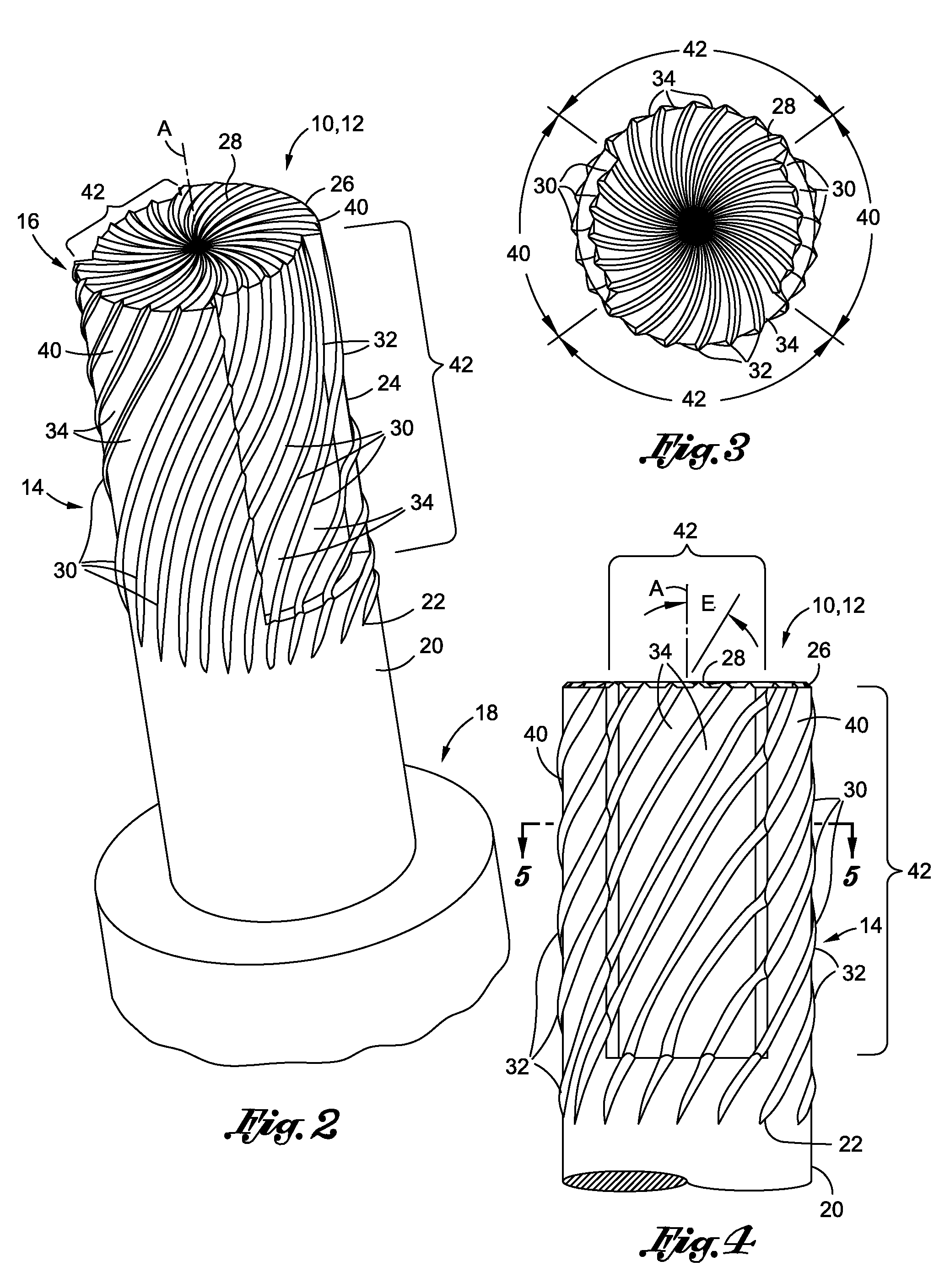Variable diameter cutting tool
a cutting tool and variable diameter technology, applied in the field of rotary cutting tools, can solve the problems of high tooth-count end mills, surface feed marks, and time-consuming hand-finishing operations, and achieve the effects of facilitating machining of metallic and nonmetallic work pieces, reducing or eliminating surface feed marks, and reducing the formation of surface feed marks
- Summary
- Abstract
- Description
- Claims
- Application Information
AI Technical Summary
Benefits of technology
Problems solved by technology
Method used
Image
Examples
Embodiment Construction
[0035]Referring now to the drawings wherein the showings are for purposes of illustrating preferred and various embodiments of the disclosure only and not for purposes of limiting the same, FIG. 2 is a perspective illustration of a cutting tool 10 or end mill 12, as such terms are used interchangeably throughout this disclosure, and which may be used in various embodiments, methods, apparatuses and systems for minimizing or preventing the occurrence of surface feed marks typically associated with high tooth-count rotary cutting tools. In this regard, the cutting tool 10 and / or end mill 12 as disclosed herein is formed with teeth 30 of varying radii in order to facilitate machining of metallic and / or nonmetallic work pieces at relatively high feed rates without the occurrence of feed marks and thereby avoiding the need for post-machining operations such as hand finishing.
[0036]Referring to FIGS. 2-4, the cutting tool 10, in one embodiment, may include a generally cylindrical elongate...
PUM
| Property | Measurement | Unit |
|---|---|---|
| feed distance | aaaaa | aaaaa |
| feed distance | aaaaa | aaaaa |
| feed distance | aaaaa | aaaaa |
Abstract
Description
Claims
Application Information
 Login to View More
Login to View More - R&D
- Intellectual Property
- Life Sciences
- Materials
- Tech Scout
- Unparalleled Data Quality
- Higher Quality Content
- 60% Fewer Hallucinations
Browse by: Latest US Patents, China's latest patents, Technical Efficacy Thesaurus, Application Domain, Technology Topic, Popular Technical Reports.
© 2025 PatSnap. All rights reserved.Legal|Privacy policy|Modern Slavery Act Transparency Statement|Sitemap|About US| Contact US: help@patsnap.com



